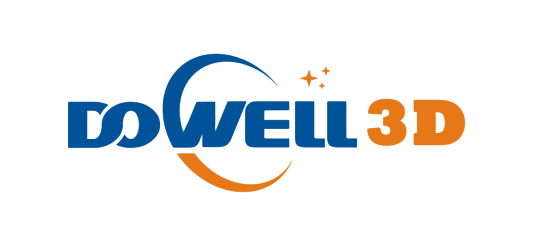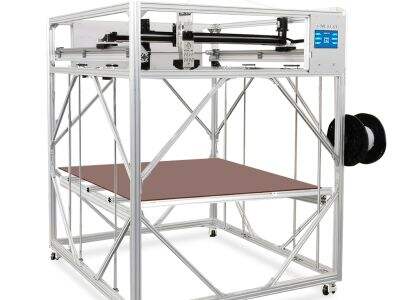En af de negative sider ved store 3D-printere er, at der opstår mange udfordringer, når man bruger store 3D-printere. Disse problemer kan gøre det svært for virksomheder som Dowell 3D at afslutte store projekter effektivt og succesfuldt. For at forstå problemstillingerne i forbindelse med store 3D-printere og hvordan producenter kan håndtere dem, lad os gå dybere ind på emnet.
Store 3D-printere overvinder tekniske udfordringer
Styrofoam-kerner fra 3D-printere er bedre end ubrugelig plastik. Selv om en af de større faldgruber at undgå med større FDM 3D SKRIVER er tekniske problemer. Disse printere skal håndtere massevis af materiale og nøjagtige designer med stor omhu. Mens udfordringer såsom langsomme printehastigheder og begrænsede materialevalg betyder, at det er svært at producerer kvalitetsprodukter i tide.
Virksomheder som Dowell 3D bruger fremgangende teknologi og instrumenter for at tackle disse udfordringer. De kan også forhaste og forbedre præcisionen i udskrivning med nye skrigere og computerprogrammer. Dette gør det muligt for dem at bygge større projekter med mere komplekse designe. Og ved at vedligeholde deres maskiner og opgradere dem på regelmæssige intervaller, kan virksomheder sikre at deres 3D-skrigere fungerer optimalt og møder minimum af tekniske fejl.
Store Udskrivningsprojekter: Omkostninger mod Effektivitet
En anden handel læres ved brugen af store 3D-skrigere i balancen mellem pris/styrke. Mens store projekter kan generere meget indtjening, er de også dyrt at producere og kræver mange ressourcer. Når virksomheder begynder på tungt udskrivningskampe, skal de overveje materialeomkostninger, energiforbrug og arbejdsomkostninger.
De bruger specielle værktøjer til at minimere omkostningerne med effektiviteten i tankerne. Virksomheder som Dowell 3D Mere info om Dowell 3D Når de finder måder at reducere udgifter, såsom ved at bruge genbrugte materialer eller forenkle produktionen, kan virksomheder fungere mere økonomisk og forøge overskud. Og virksomheder, der planlægger og budgetterer omhyggeligt for store projekter, kan sikre, at de afsluttes i tide og inden for budgettet.
Affaldshåndtering og miljøbeskyttelse i stor udskrift
Det "er meget følsomt overfor affaldshåndtering og beskyttelse af miljøet, når man bruger gigantisk FGF 3D SKRIVER . Store projekter involverer kolossale mængder materialer, der producerer tonsvis af affald, der kan skade miljøet, hvis det ikke håndteres korrekt. Virksomheder skal adoptere smarte praksisser for at minimere affald og dens kulstof fodspor.
Dowell 3D er et selskab, der specialiserer sig i bæredygtighed for at bekæmpe disse problemer. De kan også hjælpe med at skabe en bedre fremtid for verden omkring dem, hvis de bruger miljøvenlige materialer og genbruger affald der, hvor det er muligt. Ved at samarbejde med genbrugscentre kan virksomheder også investere i at bruge korrekte afsløringsmetoder for at sikre, at alt affald behandles ordentligt.
store 3D-skrybere, der kræver logistikforvaltning
Det kan også være svært at bruge store 3D-skrybere logistisk. Det er muligt at strukturere transporten af stort udskriftsudstyr og -materialer samt lageringen og distributionen, men det kan være en kompleks og tidskrævende proces. For at udskriftsprojekter skal gå glat og være succesfulde, har virksomheder brug for et godt plan for logistik.
For at tackle disse problemer anvender virksomheder som Dowell 3D software til at kontrollere logistikken. Virksomheder kan implementere disse sporingsystemer for at undgå forsinkelser eller fejl, der kan forsinke leverancer og påvirke alle hjørner af fødevarekæden over hele verden, fra råmaterialer til slutforbrugere. At arbejde tæt sammen med transportpartnere og leverandører hjælper også med at sikre, at alle materialer og udstyr ankommer i tide og i god stand.
Store 3D-skriveprojekter: Hvordan man sikrer kvalitet og korrekthed
Til sidst er nøjagtighed, præcision og kvalitet afgørende for store 3D-skriveopbygninger. Med hensyn til størrelsen på disse projekter, samt deres kompleksitet, kan det være udfordrende at vedblive med at opretholde kvalitet og nøjagtighed under overgangen til skrivning. For virksomheder er det afgørende at kontrollere kvaliteten af deres produkter ordentligt.
For at være præcise og nøjagtige i store udskriftsprojekter anvender Dowell 3D og mange andre virksomheder avancerede kvalitetskontrolsystemer. Fra at kontrollere og teste hver enkelt trin i udskriftsprocessen, til at identificere og rette op på problemer, før de når frem til det endelige produkt. Desuden kan virksomheder sikre, at arbejderne har de nødvendige færdigheder til at operere 3D-printer nøjagtigt ved at træne dem godt.

 EN
EN
 AR
AR
 BG
BG
 HR
HR
 DA
DA
 NL
NL
 FR
FR
 DE
DE
 EL
EL
 HI
HI
 IT
IT
 JA
JA
 KO
KO
 PT
PT
 RU
RU
 ES
ES
 SV
SV
 TL
TL
 ID
ID
 SR
SR
 SK
SK
 UK
UK
 VI
VI
 ET
ET
 HU
HU
 TH
TH
 TR
TR
 MS
MS
 GA
GA
 BE
BE
 HY
HY
 KA
KA
 LO
LO
 LA
LA
 MN
MN
 NE
NE
 SO
SO
 MY
MY
 KK
KK
 UZ
UZ
